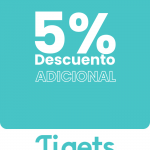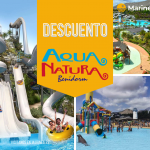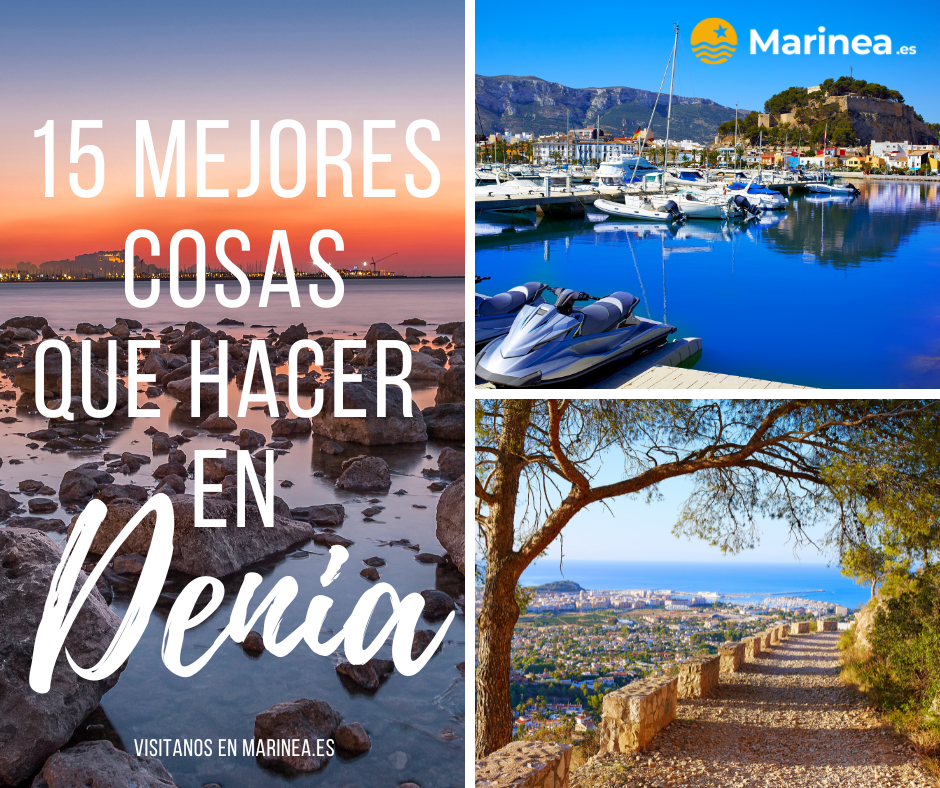Dénia is a down-to-earth coastal town that continues to live off the sea. Of course, visitors are welcomed with open arms, and there is much to love here, with four Blue Flag beaches and a culinary establishments that are highly regarded throughout Spain.
The Dénia prawn is a delicacy that only exists in a deep sea trench in the waters between here and Ibiza, and it is delicious. It's worth bearing in mind that you don't mind paying more for it.
The wild landscapes of the south and east are part of the experience, and you can make memorable excursions to the high cliffs of Cabo de San Antonio, or to the colossal Montgó at 750 metres.
.
Blog content
Let's explore the best things to do in Dénia:
Les Marines Beach
Les Marines Beach, Dénia
Starting just north of the port, Les Marines may be the choice of the magnificent beaches of Denia.
Almost three kilometres long, it is spacious enough to escape the crowds and relax in peace on the soft golden sands.
Behind the beach are low dunes and a mixture of discreet flats and large holiday homes.
Children will love it too, and you can let the little ones play in the shallow waters as the beach very gradually recedes.
As befits a Blue Flag stretch, there are beach bars and restaurants, and you can also rent hydro pedalos from the shore.
Cova Tallada
Cova Tallada Denia
There is no way to get to this cave in the San Antonio reserve unless you are willing to be intrepid.
You can get there by land from Les Rotes, continuing past the Atalaya del Gerro.
From the edge of the cliffs there are two hair-raising paths down: it is vital that you wear suitable shoes for this.
A more relaxing way is to book a kayak trip with one of Dénia's adventure sports companies and paddle here.
Regardless of how you get there, the cave is well worth the effort, with clear, sheltered waters, perfect for snorkelling, and a huge chamber to investigate.
Many people come just to sunbathe on the rocks and swim in the warm, clear sea.
- Activities WATER, Boats, Diving, Diving
- Denia
Dénia Castle
On a rocky outcrop behind the port, the castle of Dénia was built by the Moors in the 10th century on the foundations of a fortress of the Roman city of Diannium.
In the 11th century it would have been a sumptuous palace, as it was the home of the Moorish governor of Daniya Madinat.
Later, though it was necessary for military purposes to provide a bastion against the Barbary pirates who attacked the coast incessantly in the early modern period.
The castle is the highest point of the town and you can climb to the rooftop for the best view of the harbour and also the Montgó to the southeast.
Punta del Raset
The closest beach to the centre of Dénia still manages to have an open and natural atmosphere.
Punta del Raset is wide enough that you have to use the wooden walkways across the dark golden sands, which can get quite brown in the summer sun.
And as with Les Marines, its size guarantees a certain degree of seclusion, even on weekends in July and August.
It is also convenient the west orientation of Punta del Raset, with its back to the port and the easterly winds, so the sea is calmer than in the rest of Dénia's beaches.
Baix la Mar neighbourhood
One of the most beautiful places in Dénia to stroll around is the Baix la Mar neighbourhood, a maritime district that for centuries had a large population of fishermen and sailors.
It is an area of one- and two-storey houses painted in bright colours of blue, yellow and red.
Wrought iron balconies are decorated with flowers and plants cascading down the walls.
These houses are mostly from the 18th and 19th centuries, but there is evidence that it was also a seaside quarter in the Muslim period.
The closer you get to the water, the more restaurants you'll find, and near the harbour, these have outdoor seating shaded by palm trees and canvas awnings.
.
Gerro Tower
You can also take an exciting walk along the promenade to this historic vase-shaped watchtower perched on the cliffs on the Dénia side of Cabo de San Antonio.
Built in the mid-16th century during the reign of Charles I, it was one of the first generation of coastal watchtowers designed to detect or even combat Barbary pirate raids.
The structure belonged to a system of defences that would have communicated with each other through mirrors or smoke, and would have been quite self-sufficient as it was built over a freshwater spring.
The most exciting part for amateur historians is the surviving coat of arms of Charles V, with the double-headed eagle of the Habsburg Empire.
Cape San Antonio
The hike to the top of this monumental promontory southeast of Dénia may seem a little daunting for families, but the good news is that there is a mountain path winding through old windmills to get there.
Many people pack a picnic and spend a good couple of hours enjoying the views that stretch all the way to Ibiza on clear days.
The cliffs are 160 metres high and are part of a marine reserve, where fishing is prohibited and where groupers and grebes are abundant.
More information:
Montgó
If you want to tell a story to your friends, you can tackle this 750-metre monolithic mountain that separates Dénia from neighbouring Jávea.
What he doesn't need to tell you is that, despite its powerful appearance, it is actually a relatively simple climb.
If you take the CV-736, you can exit at a turn-off and park near the shooting club.
Approaching the mountain from the east side is surprisingly easy, as the road winds along terraces of grey limestone.
Only near the top you will have to be careful, as there is a bit of scree after 600 metres or so.
Afterwards you can have a drink in front of the view of Dénia and its miniature port.
Local Gastronomy
Dénia's fishing industry is alive and kicking, partly thanks to a specific type of crustacean.
The Dénia red shrimp has a bright red colour and lives in a deep sea trench 600 metres below the surface between this part of the Valencian coast and Ibiza.
Its diet of habitat and seaweed gives it a flavour that gourmets claim is unparalleled, but be prepared to shell out a little extra for this type of shrimp because it is hard to catch.
The local seafood paella is as good as any you'll taste, and you should also try espencat, a Valencian salad with red peppers and aubergine, and is usually served with cod.
Toy Museum
During the first decades of the 20th century, Denia was a toy manufacturing centre, after the phylloxera plague ruined its sultana industry.
From 1904 onwards, metal model trains and the like were assembled here.
From the 1920s onwards, the town turned its attention to wooden toys and became known for the high quality of its model cars, dolls, bowling sets and sailing ships, all carved, varnished and painted to the highest standards.
In this free attraction in the old train station of Denia, you can see these antique toys and follow the progress of toy manufacturing in the town, from the beginning of the century until the 1960s.
Museum of Ethnology
This attraction takes you back a little further, to the 19th century when Dénia experienced a certain boom thanks to its nut harvest.
Sultana revenues helped expand the city, created a middle class and brought with it a railway line.
On the ground floor you can see archive photographs of sultana production in action.
Above you can see what wealth meant for the new bourgeoisie, and the clothes and jewellery that were fashionable at the time.
Then, on the upper floor there are more rustic samples of work tools and popular costumes, as well as a map indicating the extension of Dénia's maritime trade with other nations.
The failures
The faults of Denia
In mid-March, Dénia hosts its own patron saint festivities to commemorate Saint Joseph.
As it was the patron saint of carpenters, the various merchants of the city lit bonfires to clean up their old wreckage.
Over the centuries, this snowballed into the noisy, gunpowder-fuelled celebrations that take place today.
It all starts when 11 papier-mâché sculptures, usually satirical in tone, are exhibited around the city.
This is known as the "plantà", and over the next few days the sculptures are paraded through the streets and judged to see which is the best.
There is also a daily "mascletà", a cacophonous fireworks display in Plaza Jaume I at 14:30. On the final night is the "cremà" when all but the winning sculpture are burnt in huge bonfires.
Hermitages
La Ermita De Pare Pere
A fun way to go out in the countryside around Dénia is to go in search of one of the few old hermitages or chapels, which generally date back to the 15th and 16th centuries.
These tended to be located away from the settlements and today are generally not frequented, apart perhaps from small weekly masses and on holy days when people may make the pilgrimage.
You can obtain detailed information on how to find them at the Dénia tourist office.
Take Pare Pere, for example, on the middle slope of Montgó, which sits within the natural park in a pine forest.
The modest 17th century house used by the founder, Brother Pedro Esteve, during his retreats of prayer and meditation is still standing.
Water sports
Connoisseurs value Dénia as one of the best destinations in Spain for water sports.
This has a lot to do with the orientation of the resort, taking advantage of the prevailing winds in places like Les Deveses at the top end of Punta del Raset.
is great news for windsurfers and kitesurfers, and if you have ever felt like trying these sports you will never have a better opportunity than in Dénia.
The same goes for sailing, as there are several schools in the harbour.
For spectators, the Real Club Náutico de Dénia is famous for its prestigious regattas, the Ruta de la Sal and the Canal Cup.
There are also many possibilities for kayaking, motorbike tours or snorkelling.
Here is a small selection of the activities available in Denia:
Las Rotes
The further east you go from the harbour, the smaller and rockier the beaches become.
If you prefer small coves to long beaches, you will love this part of the resort.
Les Rotes is a chain of small rock pools and beautiful beaches that, despite being in a quiet area of Denia, are complemented by a handful of elegant seafood restaurants.
They take advantage of the exquisite scenery, with unobstructed views of the golden sandstone cliffs of Cape San Antonio and the waters of the marine park below.
.























